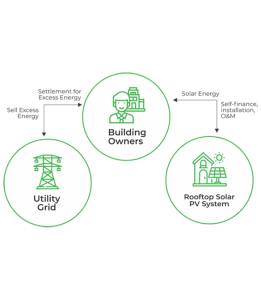Description
CAPEX Business Model: A Detailed Overview
The Capital Expenditure (CAPEX) business model is a strategic approach where businesses invest significant upfront capital in acquiring fixed assets to generate future revenue streams. Unlike the OPEX (Operational Expenditure) model which focuses on recurring operational costs, CAPEX involves substantial, one-time or infrequent investments in tangible assets with a long-term lifespan. This description delves into the intricacies of the CAPEX model, its advantages, disadvantages, and suitability for different businesses.
What is a CAPEX Business Model?
The CAPEX model centers around acquiring and utilizing long-term assets, such as:
- Property, Plant, and Equipment (PP&E): This includes buildings, factories, machinery, vehicles, and other physical assets essential for production or operations.
- Technology Infrastructure: Significant investments in IT systems, software licenses, and hardware that support business operations over an extended period.
- Intellectual Property: Acquisition of patents, trademarks, and copyrights that provide a competitive edge and long-term value.
How does it work?
- Investment Phase: This involves a substantial initial capital outlay to purchase or develop the assets. This might include securing loans, issuing bonds, or utilizing existing capital reserves.
- Operational Phase: The acquired assets are used to generate revenue. This could involve manufacturing goods, providing services, or leasing the assets to others.
- Depreciation: The cost of the assets is gradually written off over their useful life through depreciation, impacting the company's financial statements.
- Disposal/Sale: At the end of the asset's useful life, the asset may be sold, scrapped, or repurposed, generating potential resale value or reducing disposal costs.
Advantages of the CAPEX Business Model:
- Long-term cost savings: While initial investment is high, the long-term operational costs may be lower compared to leasing or outsourcing.
- Increased efficiency and productivity: Investing in high-quality, advanced assets can significantly improve efficiency and output.
- Competitive advantage: Owning specialized equipment or technology can provide a significant competitive advantage in the marketplace.
- Asset Appreciation: Some assets, particularly real estate, can appreciate in value over time, generating additional returns.
- Tax Benefits: Depreciation expense reduces taxable income, resulting in tax savings.
Disadvantages of the CAPEX Business Model:
- High initial investment: Requires significant upfront capital, potentially hindering growth or requiring debt financing.
- Depreciation: The value of assets diminishes over time, impacting the balance sheet and profitability.
- Maintenance and repair costs: Ongoing maintenance and repairs can represent significant operational expenses.
- Obsolescence risk: Technological advancements can render assets obsolete faster than their expected lifespan.
- Illiquidity: Converting CAPEX assets into cash quickly can be challenging.
When is a CAPEX Business Model Suitable?
The CAPEX model is best suited for businesses:
- With significant capital reserves or access to funding.
- Seeking long-term cost savings and increased efficiency.
- Operating in industries with high barriers to entry.
- Pursuing a strategy focused on owning and controlling key assets.
- Anticipating long-term asset appreciation.
Conclusion:
The CAPEX business model is a powerful strategy for businesses with a long-term vision and the financial capacity to make substantial upfront investments. However, careful consideration of the risks and potential downsides is crucial before adopting this model. A thorough cost-benefit analysis, including projections of revenue generation, maintenance costs, and asset depreciation, is essential to make an informed decision. Understanding the specific needs and circumstances of your business is paramount to determining if the CAPEX model aligns with your long-term strategic objectives.
